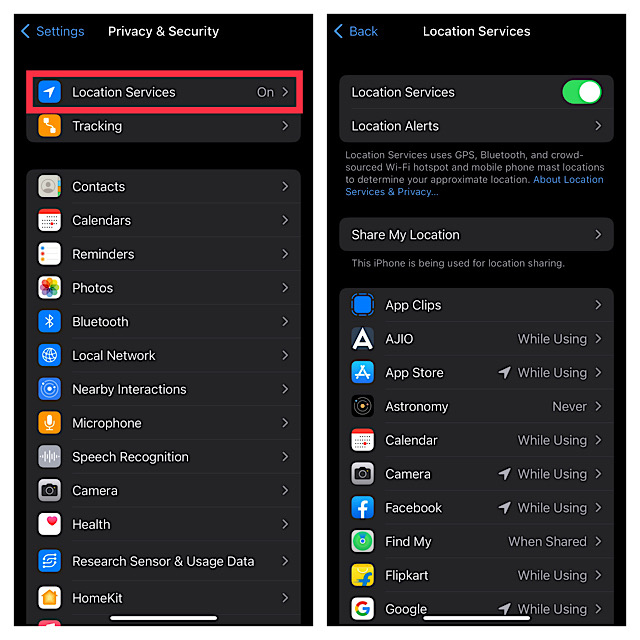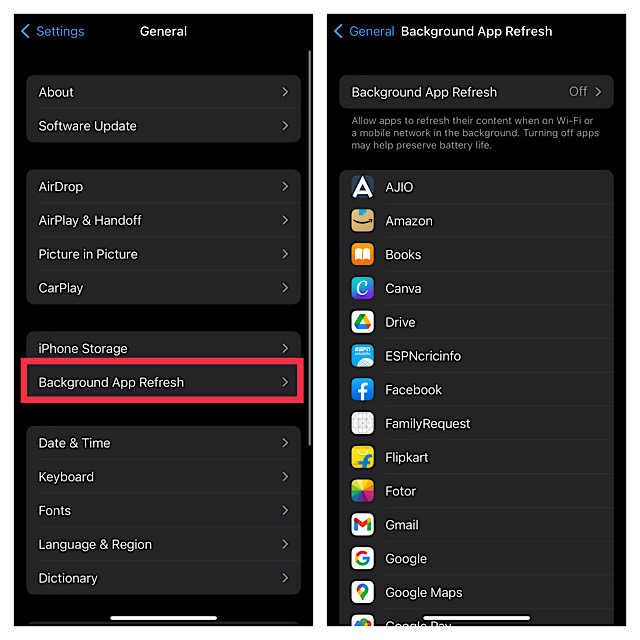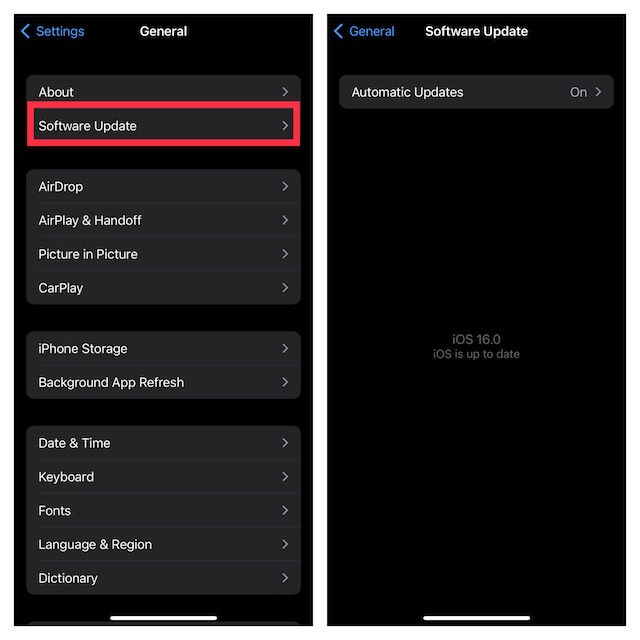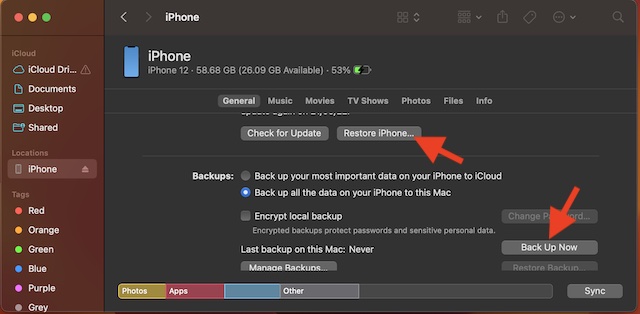Fix iPhone Overheating Issue After iOS 16 Software Update
To get going on the right note, let’s first dig into the possible reasons for the overheating problem!
What Causes the iPhone to Overheat?
When it comes to overheating issues, you need to keep in mind a number of things including the clogged up storage, faulty case, uncertified charger, low or high-temperature conditions, a software bug, and heavy usage. Not to mention, there are quite a few power-hungry features that can also trigger the overheating problem. Hence, you need to take control of several things in order to prevent your device from getting warm. Having taken each culprit into account, we have discussed all the possible ways and means to stop the iPhone from getting warm.
1. Keep Your iPhone in Suitable Ambient Temperature
Make sure to keep your iPhone at a conducive ambient temperature between 0º and 35º C (32º to 95º F). Keep in mind that the low or high-temperature conditions could force your iOS device to change its behavior to regulate its temperature. Bear in mind that using the iPhone in very hot conditions can not just decrease the battery life but also cause the device to overheat. Hence, be sure to keep your iPhone where the temperature is between -20º and 45º C (-4º to 113º F).
2. Do Not Keep Your iPhone in Parked Cars
You should never leave your iPhone in your car as temperatures in parked cars can exceed the normal temperature -20º and 45º C (-4º to 113º F).
3. Give Some Time to Your Aging iPhone to Make Peace With iOS 16
Yeah, you got that right! There is nothing new about the overheating issue after the software update. Post the software update, it takes a while for iOS to sync all the data. Especially if the file size is large, you have got to be a bit patient. During this period, you may also notice rapid battery drain, random rebooting, and even overheating. The better way to deal with it is to avoid heavy lifting.
4. Situations When Your iPhone Tends to Overheat
There are several situations when iPhone tends to get warm. As this is normal behavior, you should be fully aware of it. Your iPhone may overheat when…
You set up your iPhone the first time You restore your iPhone from a backup You wirelessly charge your device You use high-octane games and processor-intensive apps, You stream high-quality video
Apple states that these conditions are normal and that your iPhone will return to a normal temperature once the process is complete. In this situation, your iPhone will display a temperature warning. If there is no warning, you can continue to use your device without any concern.
5. Remove the Case from Your iPhone
Some cases do not feature the heat dissipation design. As a result, they cause the device to overheat. So, if you are using a rugged case or a bulky cover, remove it. Then, shut down your iPhone. After that, wait for about 10-15 minutes, and then press the side button to reboot your iPhone.
6. Check Your Charger
If you are using an uncertified charger to power up your iPhone, the charger could very well be at fault. Hence, try charging your iPhone with an MFi or certified charger. If the device doesn’t get warm now, you have gotten the better of the issue.
7. Never Use Your iPhone While It’s Charging
If you have the habit of using your iPhone while it’s charging, you should stop doing it sooner than later. Most probably, it’s this bad charging habit that’s spoiling your party.
8. Make Sure to Force Quit Apps
Another bad charging habit that you must get rid of at the earliest is to force quit apps when they are no longer in use. If a number of apps remain open in the background unnecessarily, they not only kill a lot of battery but also cause the overheating problem.
9. Disable Location Services
Non-stop GPS tracking not only tends to drain a lot of battery but also triggers the overheating issue. So, make sure to either completely turn off this feature or use it smartly.
Go to the Settings app on your iPhone -> Privacy & Security -> Location Services. Now, you can choose to completely disable this feature or allow only a few important apps to access your location data while you are using them.
10. Turn Off Background App Refresh
In more ways than one, the background app refresh is on the same page as the location services. While it does play a vital role in keeping apps fresh, the continuous refreshing of apps in the background often causes the overheating problem. Not to mention, it also gobbles up a fair amount of battery.
Head over to the Settings app on your iPhone -> General -> Background App Refresh and then turn it off.
11. Force Restart Your iPhone
At times, all you need to do to fix an overheating iPhone is just give it a force reset. Hence, give it a chance as well.
Press and quickly release the volume up button. Then, press and quickly release the volume down button. Now, hold down the side button until the Apple logo pops up on the screen.
12. Update All Apps
Outdated apps create a number of problems including sluggishness, touchscreen unresponsiveness, battery drain, and even overheating in some cases. So, if you have some apps that have not been updated for a while, update them all.
Open the App Store on your iPhone -> your profile -> scroll down to find the list of apps. Now, go ahead and update them all at once or one by one.
13. Update Your iPhone
No solution as yet? If you haven’t yet been able to overcome the problem, go for the software update. I suspect there could be a hidden software bug behind this issue. Hence, updating is the best way to deal with such a situation.
Navigate to the Settings app on your iPhone -> General -> Software Update. After that, download and install the latest version of iOS as usual.
14. Clean Up the Storage
Cluttered or clogged-up storage is one of the main reasons why an iPhone tends to overheat. Hence, I would recommend you clean up the entire storage. Yeah, wipe out all the redundant files, apps, and screenshots to recover plenty of precious storage. Not sure where to get started with the cleanup drive? Go to the storage section to have a clear perspective about what needs to be decluttered.
Launch the Settings app on your iPhone -> General -> iPhone Storage. Now, have a look at the storage bar representing the total amount of consumed and available storage. To find out how much space each app has taken up, scroll down to the list of apps. The total consumed storage by an app will appear on the right side. Now that you know which are culprits, kickstart a marathon cleanup drive to get rid of everything you don’t need anymore.
15. Restore Your iPhone
If your iPhone continues to overheat, restore it as new. Known as a nuclear solution, there is a good chance, it can help you fix the issue. Note that restoring will completely erase your iPhone. Therefore, make sure to back it up beforehand.
Connect your iPhone to your computer using a USB cable -> open Finder/iTunes and select your device. Now, back up your iPhone. If you want the backup to include health data and Safari passwords as well, check the box to the left of Encrypt local backup and then password-protect it. Once you have successfully backed up your iPhone, restore it.
Tips to Keep the Overheating Issue on iPhone at Bay…!
There you have it! So, these are the best tips and tricks to troubleshoot the overheating problem on your iPhone. As outlined above, you can keep this issue at bay by taking care of all the basics and avoiding the bad charging habit. Well, if the problem continues to haunt your smartphone, software update and restoring (the last resort) come in handy more often than not. That said, which one of these tips have come enabled you to fix your iPhone? Be sure to shoot your feedback via the comments section below. Read more: How to Fix iPhone 14 Pro Always-On Display Not Working




